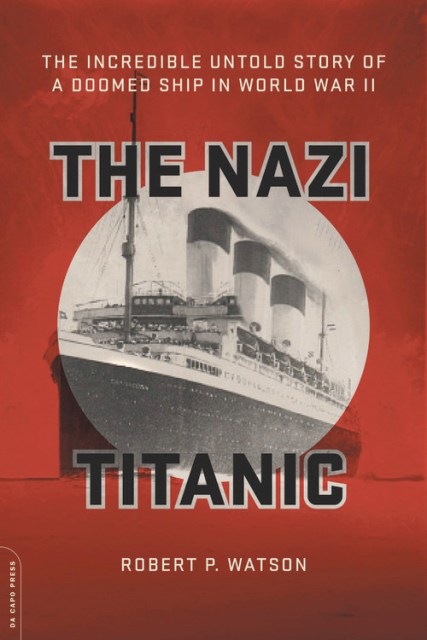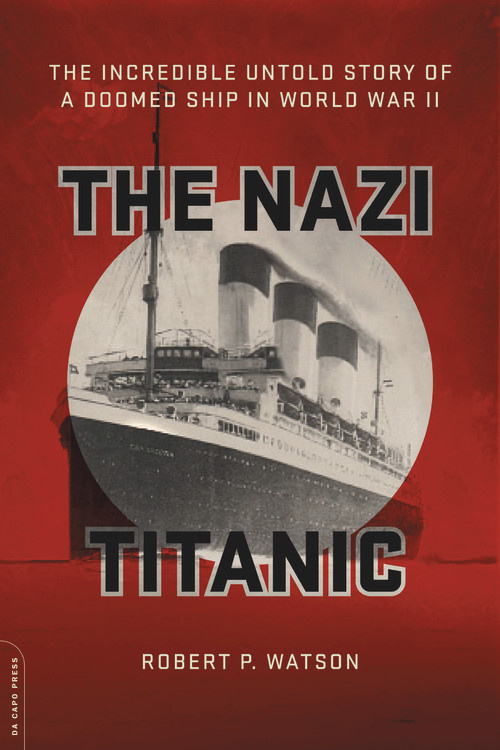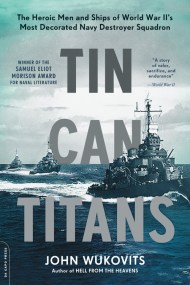Promotion
Use code FALL24 for 20% off sitewide!
The Nazi Titanic
The Incredible Untold Story of a Doomed Ship in World War II
Contributors
Formats and Prices
Price
$16.99Price
$22.49 CADFormat
Format:
- Trade Paperback $16.99 $22.49 CAD
- ebook $11.99 $15.99 CAD
This item is a preorder. Your payment method will be charged immediately, and the product is expected to ship on or around September 5, 2017. This date is subject to change due to shipping delays beyond our control.
Also available from:
Following the film’s enormous failure, the German navy used the Cap Arcona to transport German soldiers and civilians across the Baltic, away from the Red Army’s advance. In the Third Reich’s final days, the ill-fated ship was packed with thousands of concentration camp prisoners. Without adequate water, food, or sanitary facilities, the prisoners suffered as they waited for the end of the war. Just days before Germany surrendered, the Cap Arcona was mistakenly bombed by the British Royal Air Force, and nearly all of the prisoners were killed in the last major tragedy of the Holocaust and one of history’s worst maritime disasters.
Although the British government sealed many documents pertaining to the ship’s sinking, Robert P. Watson has unearthed forgotten records, conducted many interviews, and used over 100 sources, including diaries and oral histories, to expose this story. As a result, The Nazi Titanic is a riveting and astonishing account of an enigmatic ship that played a devastating role in World War II and the Holocaust.
-
“Fascinating, insightful, and dramatic, Robert Watson's The Nazi Titanic offers a unique story from WWII—a single ship whose tumultuous history unfolds as a metaphor for the Nazi ship of state. ?Readers will be caught up in a compelling and often startling voyage.”—Howard Blum, author of The Last Goodnight and Dark Invasion
“Robert Watson has brought to vivid life with extensively researched detail the powerful story of this singular ship and the harrowing plight of those sent to a tragic fate in the final hours of the War. It is a riveting, little-known story of disaster and, for all too few, survival.”—Deborah Oppenheimer, Academy Award-winning film producer of Into the Arms of Strangers
“Robert Watson has told the story of the voyage of the Cap Arcona with poignancy and power and, above all, with fidelity to history and respect for those whose lives were lost. The Nazi Titanic is a story worth telling—unpredictable and unendingly interesting. Watson's prodigious research and mastery of the art of storytelling shine forth in every page. How sad and how angry this reader felt when the great ship went down.”—Michael Berenbaum, prominent Holocaust scholar, author, filmmaker, and Director of the Sigi Ziering Institute -
“Set with great skill within the larger contest of the war, the Holocaust, and several of its principal perpetrators, this long suppressed, gripping, and moving story is told with the historian's rigor and the narrative artistry of the gifted storyteller. Unforgettable!”—Rabbi David Gordis, President-Emeritus of Hebrew College
Praise for The Nazi Titanic
Deseret News, 4/10/16
“A well-researched book…More of a history of the end of World War II rather than simply a story of a ship.”
New York Post, 4/24/16
“Reveals a little known chapter of the Third Reich.”
Library Journal (starred review), 5/1/16
“This work has much to offer both scholars and casual readers. Anyone interested in the maritime history of the Third Reich will enjoy.”
Daily Mail (UK), 5/12/16
“[Watson] details the tragicomic catastrophe of the Nazis' most ambitious film venture and the terrible fate of the cruise liner that stood in for the Titanic.”
New York Journal of Books, 5/15/16
“An easily read, well-written, and interesting story of a largely unknown event of World War II…This story needed to be told lest we forget.”
-
Advance praise for The Nazi Titanic
“The Nazi Titanic is a superb marriage of deep research and first class storytelling—a fascinating tale of a German luxury liner whose fate eerily and tragically mirrored that of the Third Reich.”—Alex Kershaw, New York Times bestselling author of The Bedford Boys and The Longest Winter
“Wow! What an incredible and tragic story. Just when you think nothing more could be written about what the Jewish prisoners suffered during the Holocaust, along comes this remarkable account. I cried with pain at Professor Watson's portrayal of hell during the final days of World War II. A must read for anyone who cares about the brutality of war.”—Alan Dershowitz, acclaimed Harvard Law School professor and award-winning author
“Combining rigorous scholarship with a compelling You-Are-There narrative, The Nazi Titanic is at once fascinating, engaging, chilling, and revelatory. It's a journey everyone should undergo.”—Martin Goldsmith, classical music radio host and author of The Inextinguishable Symphony and Alex's Wake -
Examiner.com, 5/13/16
“In The Nazi Titanic, Robert P. Watson gives this tragic episode the attention it has always deserved.”
Washington Times, 5/30/16
“A gripping—and disturbing—book.”
InfoDad blog, 6/2/16
“[Watson's] careful exploration of what happened and why is intriguing and raises meaningful issues…Readers drawn into the story by a book title with the word Titanic in it will find considerable intriguing material here.”
Columbus Dispatch, 6/12/16
“Watson's compelling book…tells the story of the ship and its passengers, setting it in the context of the chaotic and horrifying end of the war…Watson makes good use of accounts of those who survived or witnessed the boat's sinking to craft a dynamic account of the ship's last days and hours…An almost-forgotten subject well worth bringing to light.”
Intermountain Jewish News, 6/17/16
“[A] striking historical account…Watson tells this story directly and with no holds barred...Painstakingly researched and written with the skill of an expert storyteller...Gripping and informative.” -
Jewish Book Council, 7/19/16
“The story of this ship and its final passengers is a stark reminder that every life lost during that deadly period is precious...Watson is able to weave an interesting story and draw attention to the poignancy of the last days of the Third Reich... An interesting book about an unknown chapter of Holocaust history... The book reads as a novel...Anyone interested in maritime history and learning about one of the Holocaust's unexamined incidents will find this book of supreme interest.”
Milwaukee Shepherd Express, 7/18/16
“Watson shows us in a compelling way that even a subject as thoroughly studied as World War II can still offer up its secrets, its cover-ups, its long untold stories, its lessons for us today.”
Midwest Book Review, July 2016
“A riveting and astonishing account of an enigmatic ship that played a devastating role in World War II and the Holocaust. An impressive, comprehensively detailed, and truly exceptional history of a hitherto suppressed tragedy, The Nazi Titanic is a consistently compelling read from beginning to end.”
-
"Fills in a gap in naval history...Solid research...The narrative is accurate and exact...Anyone interested in operations in the Baltic at the close of WWII in Europe, or anyone interested in air operations against shipping will find this book well worth consideration."Warship International, September 2016
-
"[A] fascinating story...A tale of Hitlerian hubris."Hadassah Magazine
- On Sale
- Sep 5, 2017
- Page Count
- 320 pages
- Publisher
- Da Capo Press
- ISBN-13
- 9780306825439
Newsletter Signup
By clicking ‘Sign Up,’ I acknowledge that I have read and agree to Hachette Book Group’s Privacy Policy and Terms of Use







